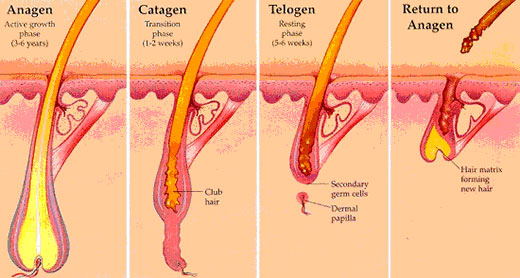History of Laser Hair Removal
Laser hair removal has been used as a form of epilation since the 1960s; however, most of the devices that were commercially available early on were withdrawn from sale due to the risks they posed, lack of testing and the fact that they were ineffective and the hair removal was not permanent.

The first lasers were known as Wave 1 Lasers and were withdrawn as they emitted a continuous beam of light and could not be controlled.
Next were the Wave 2 Lasers, in the 1970s. These devices targeted individual hair follicles using a fibre-optic probe but were withdrawn as there had been no testing done and because of false claims that the procedure was painless.
Wave 3 Lasers were introduced in the 1980s but again they were withdrawn from sale as they were ineffective and tedious to use.
In 1995 Wave 4 Lasers were released. These lasers, using a carbon-based lotion as a chromophore, would heat the carbon and release a shock wave to the follicle to kill it. However, this process could also damage nearby skin cells.
And finally in 1997, Wave 5 Lasers were released and are the lasers still in use today. Wave 5 Lasers target the melanin within the hair and are safe and effective. The risk of any side effects is greatly reduced due to the epidermal cooling inbuilt into the laser.
How does Laser Hair Removal Work
Laser hair removal is generally accepted as being a method for permanent hair reduction not permanent hair removal. Currently the only permanent hair removal method is electrolysis.
Laser hair removal works by selective photothermolysis, which is the precise targeting of the hair follicle using a specific wavelength of light. Furthermore, this is done with the intention of only absorbing light into the target hair follicle. As light is absorbed by dark objects the laser is absorbed by the melanin in the hair follicle. Melanin is the chemical responsible for dark hair colour. The energy targeted into the hair follicle provides sufficient heat to destroy the root and weaken the follicle, while allowing the surrounding area to remain relatively untouched.
Laser Hair Removal only works on hair during its growth phase. The growth or anagen phase is the active growth phase of the hair follicle during which hair grows about 1cm every four weeks on average. At any one time about 90% of all hair is in the anagen phase. A signal causes the hair to stop growing and enter into the catagen phase where a club hair is formed. Once formed the hair follicle enters the telogen phase where it dies and is shed. It is because of this hair growth cycle that laser hair removal treatments must be repeated to give the best results.

Typically, a course of laser hair removal will take about 6 sessions, but may require up to 10 on each area. Depending on the area, sessions can range from 5 to 60 minutes. These sessions are usually done every 4-6 weeks to give the best results.
Why Laser Hair Removal?
There are a number of reasons people choose laser hair removal over other methods. Some of these reasons include:
- It offers permanent hair reduction
- After the course of treatment, there are no further treatments required
- There are no painful ingrown hairs
- There is no regrowth stubble
- It leaves your skin feeling silky and smooth
- It represents a significant time and money saving
- There is no need to worry about the embarrassment of unwanted hair
- It promotes the stimulation of collagen in treated area
Laser Hair Removal has been said to feel like a small rubber band being snapped against your skin. It is suitable for both women and men and for most body areas including the face, upper lip, underarms, bikini, Brazilian, arms, legs, chest, stomach, back and the bottom.
Below is a comparison to other methods of hair removal:
Shaving is a short-term solution to hair removal as it simply cuts the hair off at the skin surface. Contrary to popular belief shaving does not change the thickness or colour of your hair or make it grow faster or slower.
Plucking out hair with tweezers is a short-term solution to hair removal and can be painful and time-consuming; however, as the hair has to grow back from the follicle it can take longer before the hair is noticed. Done repeatedly over time, plucking hair out from the follicle may damage it enough to stop any further hair growing.
Bleaching is technically not a hair removal method but is a way to make hair less noticeable. Bleaching lightens the colour of the hair to blonde and results can last anywhere from 2-6 weeks.
Hair removal creams chemically dissolve hair but can cause irritation and redness. Using depilatory creams is not permanent and some creams have to be applied at least twice a day.
Waxing provides hair-free results for two to four weeks but is painful and can cause ingrown hairs and skin irritation.
Sugar Waxing is similar to normal waxing but uses a paste made from sugar, water and lemon juice. Similar results to normal waxing should be achieved but again the process is painful and can cause ingrown hairs and skin irritation.
Electrolysis is the only permanent hair removal method but is expensive, time-consuming and painful. Electrolysis destroys each individual hair follicle by passing an electric current through a needle.
Types of Laser Hair Removal
There are a number of different types of lasers used for laser hair removal. The most commonly used lasers in Australia are the Candela GentleLASE, Candela GentleYAG. Some clinics also use Intense Pulse Light machines (IPL) but these are technically not lasers.
Candela GentleLASE is a high energy Alexandrite laser operating at a wavelength of 755 nanometers (nm) and has the largest spot size and fastest repetition rate found on any hair removal laser which means you're subjected to fewer laser pulses and the treatment time will be significantly shorter. The GentleLASE can be used on all skin types but better results may be seen by clients who have dark hair and light skin. The GentleLASE features the Dynamic Cooling Device to minimise any pain. Depending on its configuration, it may also be used to treat wrinkles, melasma, freckles, sun spots, vascular lesions, age spots.
Candela GentleYAG has multiple spot sizes and variable pulse durations and is suitable for all skin types. However, as it operates at a longer wavelength of 1064 nanometers (nm), which allows the light to penetrate deeper into the skin, it is generally better for darker skin colours. Like the GentleLASE the GentleYAG also features Candela's patented cryogen cooling system (Dynamic Cooling Device) for maximum comfort. Depending on its configuration, it may also be used to treat wrinkles, facial veins, skin tightening and leg veins.
IPL or Intense Pulse Light machines are not lasers but use a concentrated beam of incoherent light to burn the hair shaft. As IPL machines produce a wide bandwidth of light, they can heat up the surrounding area as well as the hair. Lasers produce a selective bandwidth of light that only affects the hair. IPL machines are generally cheaper and were not designed for hair removal.
Cost of Laser Hair Removal
Prices vary from clinic to clinic and so do their methods of charging. Some have set prices per session for each area, others charge per 5 minute block of time. Remember to take into account that for best results you will have to undergo between 6 and 10 sessions.
Aside from electrolysis, every one of the above hair removal methods will have to be repeated regularly, from a couple of times a day to every month. Taking this into account laser hair removal can work out to be much cheaper in the long run. Comparing the cost of a Brazilian wax and Brazilian laser hair removal we can see the massive savings that laser hair removal represents. A Brazilian wax at $50 a session x 12 times a year x 30 years = $18,000. Brazilian laser hair removal at $75 a session x 6 sessions = $450.